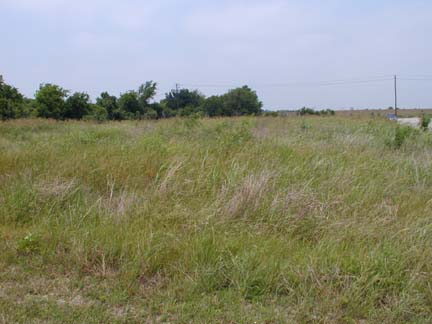|
Desmanthus leptolobus TORREY & A.GRAY
Common names: Prairie mimosa, Prairie bundleflower, Slenderlobed bundleflower
Description
|
Desmanthus leptolobus is an inconspicuous and more or less prostrate plant.
It can be found growing wild in many areas of the south central US.
While it is easily overlooked, it is often locally abundant over large expanses of rolling prairie.
Occurrence is especially common in disturbed areas, vacants lots, development properties, cleared areas, construction projects, fill-dirt, embankments, discarded ballast, roadsides, open grassy areas, sunny watersheds or drainage zones (if they are regularly shredded or mowed) and in 'wastelands'.
Distribution in the central US sprawls from Nebraska deep across central Texas.
We have found substantial populations both to the south and to the east of its published range.
Desmanthus illinoensis is distributed far more widely; herbarium specimens have been recorded from Canada to the Gulf Coast.
Desmanthus illinoensis is also much easier to spot.
This makes the fact that it commonly co-occurs with D. leptolobus quite useful.
The two plants often occur together but do not hybridize to any appreciable degree.
Once seed-pods have formed, Desmanthus illinoensis becomes easy to spot and can function as a good indicator plant for populations of Desmanthus leptolobus (in the areas in which Desmanthus leptolobus occurs.)
They both are common roadside weeds but due to heavy metals and other road run-off pollutants this is not a good choice for a collection site.
Similarly their pronounced resistance to herbicides may result in elevated residual levels.
They frequently grow along drainage ditches, creeks and rivers.
Normally they will be found on or near the tops of the banks or in other sunny spots.
Another excellent place is cultivated land that has been allowed to revert to 'waste areas' or land which has been cleared pending future development.
Desmanthus aggressively establishes itself in any land that has been cleared of other plants or grassland that is regularly mowed or shredded.
It is one of the early-appearing components of land-reclamation vegetation and rapidly disappears once trees and shrubs begin to predominate.
Walking down creeks or along greenbelt or weedy strips in developed areas is a good place to start.
Also check out large cleared fields that are sitting vacant waiting sale for development.
Suburban or commercial developments are ideal.
These plants often occur in dry earth.
Many times areas populated only by Desmanthus leptolobus appear from a distance to have few or no plants growing in them.
What will be there is scattered and low.
A closer look will often reveal Desmanthus leptolobus in large numbers.
Due to their habit of growth they often are not noticed until within a few yards of them.
This is especially true when they grow among grasses as can be seen below.

Desmanthus leptolobus in habitat
The best approach with Desmanthus is probably to establish them in areas that you know and have access to.
We strongly suggest wild-crafting for everyone who can.
Once established in an area, Desmanthus is very difficult to eradicate and perceived to be a pest only by those who love manicured lawns.
It is an important early recolonizer of waste areas and an important pioneer plant in the natural revegetation process.
Next page
|
|
